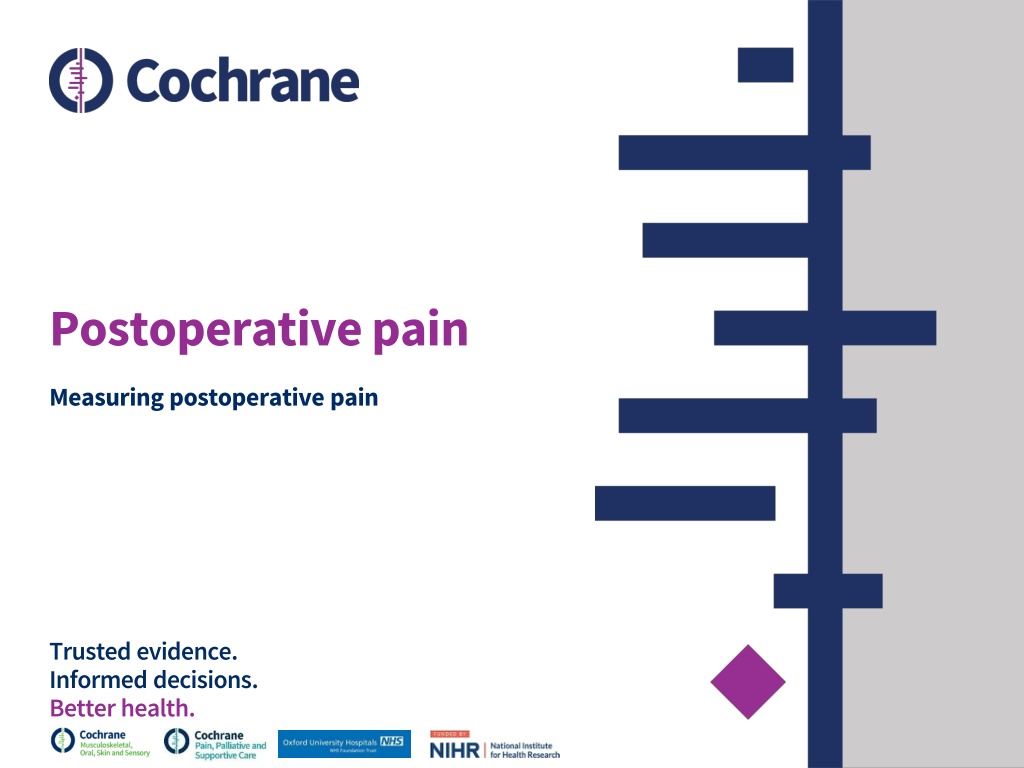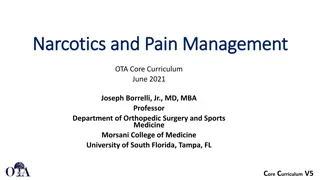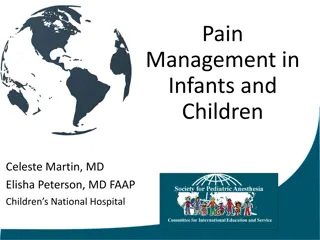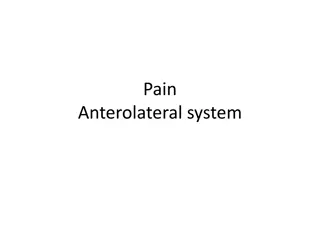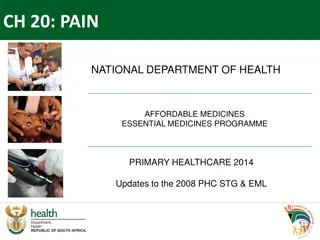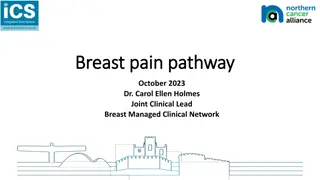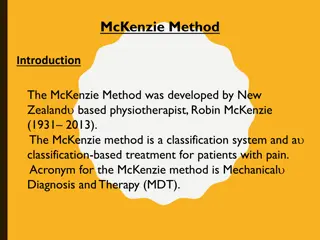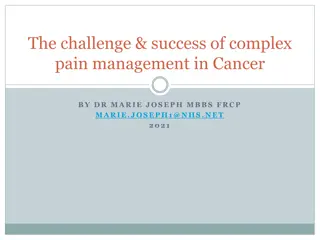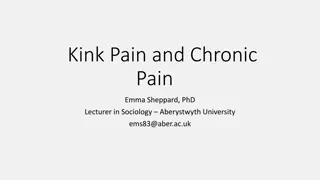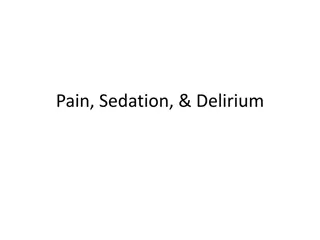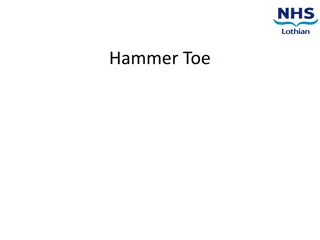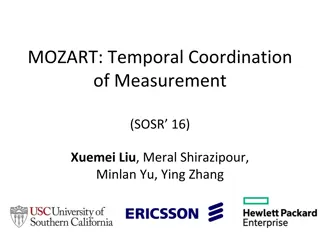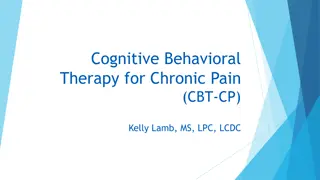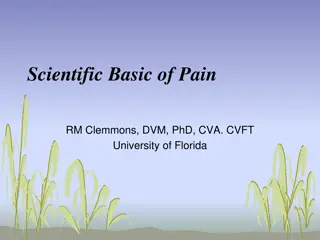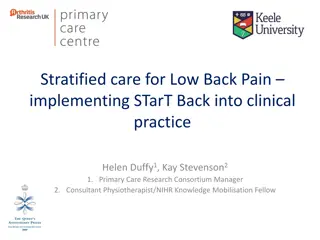Understanding Postoperative Pain Measurement Methods
Standard methods for measuring postoperative pain include categorical, visual analogue, and numerical rating scales. Patients should self-assess their pain using these tools for accurate reporting, as demonstrated by research on pain congruence between patients and nurses. Enhancing understanding of pain measurement techniques can lead to better pain management post-surgery.
Download Presentation

Please find below an Image/Link to download the presentation.
The content on the website is provided AS IS for your information and personal use only. It may not be sold, licensed, or shared on other websites without obtaining consent from the author. Download presentation by click this link. If you encounter any issues during the download, it is possible that the publisher has removed the file from their server.
E N D
Presentation Transcript
Postoperative pain Measuring postoperative pain Trusted evidence. Informed decisions. Better health.
Contents 01 Background to measurements 02 Categorical pain intensity and pain relief scales 03 Visual analogue and composite pain scales 04 Patients must measure their own pain 05 How pain scores are expressed and calculated 06 Time to remedicationand other measures
Background to measurement There are standard methods of measuring pain intensity and pain relief using: Categorical rating scales Visual analogue rating scales (VAS) Numerical rating scales (NRS) The person with pain should assess and report their pain No other person can measure it accurately Rules here are for people who can communicate Does not apply to children or where communication impossible
Categorical verbal pain scales Low values good High values good Pain intensity severe moderate mild none Pain relief complete good moderate slight none 3 2 1 0 4 3 2 1 0
Visual analogue pain scales Pain intensity scale LEAST possible pain WORST possible pain Low values good Pain relief scale NO relief of pain COMPLETE relief of pain High values good
Numerical rating and other scales A = Faces scale, usually used for children B = NRS with 0-10 with three anchors C = VAS without numbers and with two anchors D = NRS with six anchors but without numbers
Patients must measure their own pain Underestimation Congruence Overestimation Survey to determine extent of congruence in pain reporting: 100% 15% 21% 28% 38% Inpatient self-reported pain (n=869) 80% 33% 60% Nurse pain-evaluation (n=115) 34% 79% 40% Congruence was limited 62% 52% 39% Nurse evaluators underestimated pain more at higher pain levels 20% 0% No pain Mild Moderate Severe Melotti et al. Europ J Pain 2009 13:992 1000
Patients must measure their own pain Systematic review comparing paired pain scoring by patient and caregiver 80 studies, with 20,496 patients Compared with patient, caregiver estimates were reported to be: Underestimated in 62 studies (78%) Same 17 studies (21%) Overestimated 1 study (1%) Larger and high-quality studies reported underestimation in 90% of cases The extent of underestimation tended to increase with pain severity Magnitude of underestimation approximates the best pain treatments Seers et al. Pain 2018 159:811-18
Timing of measurements What happens without an analgesic intervention? How long does acute pain last? Typically hours to a few days postoperatively, but may be minutes in some circumstances How long does the analgesic intervention last? Usually 4 - 6 hours for oral analgesics, but some interventions may be longer An example from third molar extraction
What happens with ibuprofen Individual patient data from RCT with ibuprofen sodium 400 mg
What happens with placebo Individual patient data from RCT with placebo Moore et al. Europ J Pain 2015 19:187-92
How pain scores are expressed For single dose studies it has been usual to sum pain measures over about 6 hours because that is how long most analgesics have lasted Summed pain intensity difference (SPID): take difference in pain score between baseline and later times and add them up. Higher values are better Total Pain Relief (TOTPAR): Add all pain relief scores together over time period. Higher values are better Equivalent for VAS pain intensity (VASPI) and VAS pain relief (VASTOTPAR)
Areas under the curve categorical verbal rating scale: pain relief 0 = none 1 = slight 2 = moderate 3 = good 4 = complete maxTOTPAR 4 3 catP R 2 TOTPAR 1 0 0 2 4 6 Time (h) TOTPAR maxTOTPAR x 100 = %maxTOTPAR
Combining different pain measures Generally cannot combine pain intensity with pain relief scores: they have different directions low is good for intensity, high is good for relief Combining 0 - 10 and 0 - 100 scales is frequently done, using a common base of 10 or 100 (5.6 becomes 56, or vice versa, for example) Better to use Mean Difference rather than SMD because the MD is more meaningful Difficult to combine 0 - 10 or 0 - 100 scales with categorical scales Evidence detail: it is known that categorical or VAS pain intensity and pain relief scales, and global rating scales, all provide the same estimate of efficacy when studies in individual patient data analyses from the same group of trials using identical methods
Other measurements Other measures may be made and may be relevant depending on: type of intervention or surgery type of patients single or multiple dose duration of the study Other measures and outcomes will be the subject of later sections
Acknowledgements Thank you to the Cochrane Network Innovation Fund Thank you to Mohammed A. Abusayed (University Hospitals of Derby and Burton, UK) for auditing reviews of interventions for pain in the Cochrane Library in 2016 Thank you to all the project team members and MOSS key contacts Joanne Abbott; Geert Crombez; Rob Dellavalle; Christopher Eccleston; Anna Erskine; Emma Fisher; Kerry Harding; Jennifer Hilgart; John Lawrenson; Hopin Lee; Nuala Livingstone; Lara Maxwell; Andrew Moore; Gill Norman; Neil O'Connell; Roses Parker; Phil Riley; Kate Seers; Teo Aminah Wasteneys Quay; Andrew Smith; Martin Tram r; Peter Tugwell; Katie Webster; Amanda C de C Williams All the slides and documents hosted on the PaPaS website https://papas.cochrane.org/resources/acute-pain-outcomes
